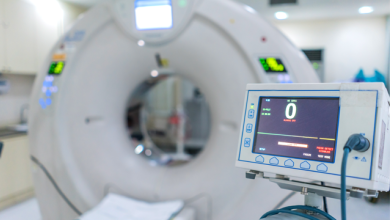Search results
Cardiac Toxicity of Cancer Chemotherapy
Author(s):
Aarti Asnani
Start date:
Aug 08, 2017
Broadcast
Cardiac Computed Tomography—2005
Author(s):
Matthew J Budoff
Added:
3 years ago
Article
Author(s):
Matthew J Budoff
Added:
3 years ago
Cardiac computed tomography (CT) has evolved greatly over the last 20 years. This article reviews its current clinical uses, and describes some of the potential for even greater utility in the near future. Electron beam tomography (EBT) was developed 20 years ago specifically for cardiac imaging. Although the technique can quantify ventricular anatomy and function1 as well as myocardial…
View more
Author(s):
Kevin Lee
,
Iva Minga
,
Eryn Cameron
,
et al
Added:
9 months ago
Author(s):
Tasneem Z Naqvi
Added:
3 years ago
Congestive heart failure (CHF) is the number one hospital discharge diagnosis for older adults and the leading cause of hospital readmissions, reflecting poor quality of life for patients and increased healthcare resource use, and is the cause of 300,000 deaths annually.1 Cardiac resynchronization therapy (CRT) has become a new effective treatment modality in those with drug-resistant advanced…
View more
Author(s):
Peter L Friedman
Added:
3 years ago
The Biology of Cryotherapy
Cryotherapy is the use of cooling and freezing in living tissue to affect cellular function and activity. To produce cryotherapeutic temperatures, heat energy is removed from the tissue, rather than 'injecting cold energy into the tissue. Multiple factors influence the effectiveness of catheter-based cryotherapy. Chief among these are tip contact (to remove heat from…
View more
Author(s):
Peter L Friedman
Added:
3 years ago
For many cardiac arrhythmias, catheter cryoablation is now a safe and effective alternative to RF ablation. Freezor┬«, a 7F cryocatheter, has been in clinical use in Europe, Canada and the US for several years. In that time, it has established a record of safety and effectiveness in the treatment of arrhythmias, particularly in peri-nodal procedures. With its demonstrated safety profile -…
View more
Author(s):
Aarti Asnani
,
Randall T Peterson
Added:
3 years ago
Survival rates among patients diagnosed with cancer have improved dramatically over the past few decades. In 2016, there were an estimated 16 million cancer survivors in the United States, a number expected to increase to 20 million over the subsequent decade.1 One-third of these patients will survive at least 5 years after their initial cancer diagnosis, largely due to cancer therapies that are…
View more
Author(s):
Hans Joachim Nesser
Added:
3 years ago
Tissue Doppler-based measurements of myocardial strain are possible and accurate for structures that move along the ultrasound beam, but are underestimated in other directions and even impossible for angles close to 90º. To overcome these limitations, the speckle tracking technique was introduced in 2004, offering a more user-friendly workflow and better reproducibility.1 This echocardiographic…
View more
Author(s):
Kiran K Khush
,
Sharon A Hunt
Added:
3 years ago
The field of heart transplantation has evolved tremendously since Alexis Carrel first explanted a canine heart and anastomosed it to the carotid artery and jugular vein of a recipient dog in 1905.1 In 1960, Norman Shumway and Richard Lower at Stanford described a technique for orthotopic canine heart transplantation and demonstrated adequate physiologic function of the denervated heart.2 Their…
View more











